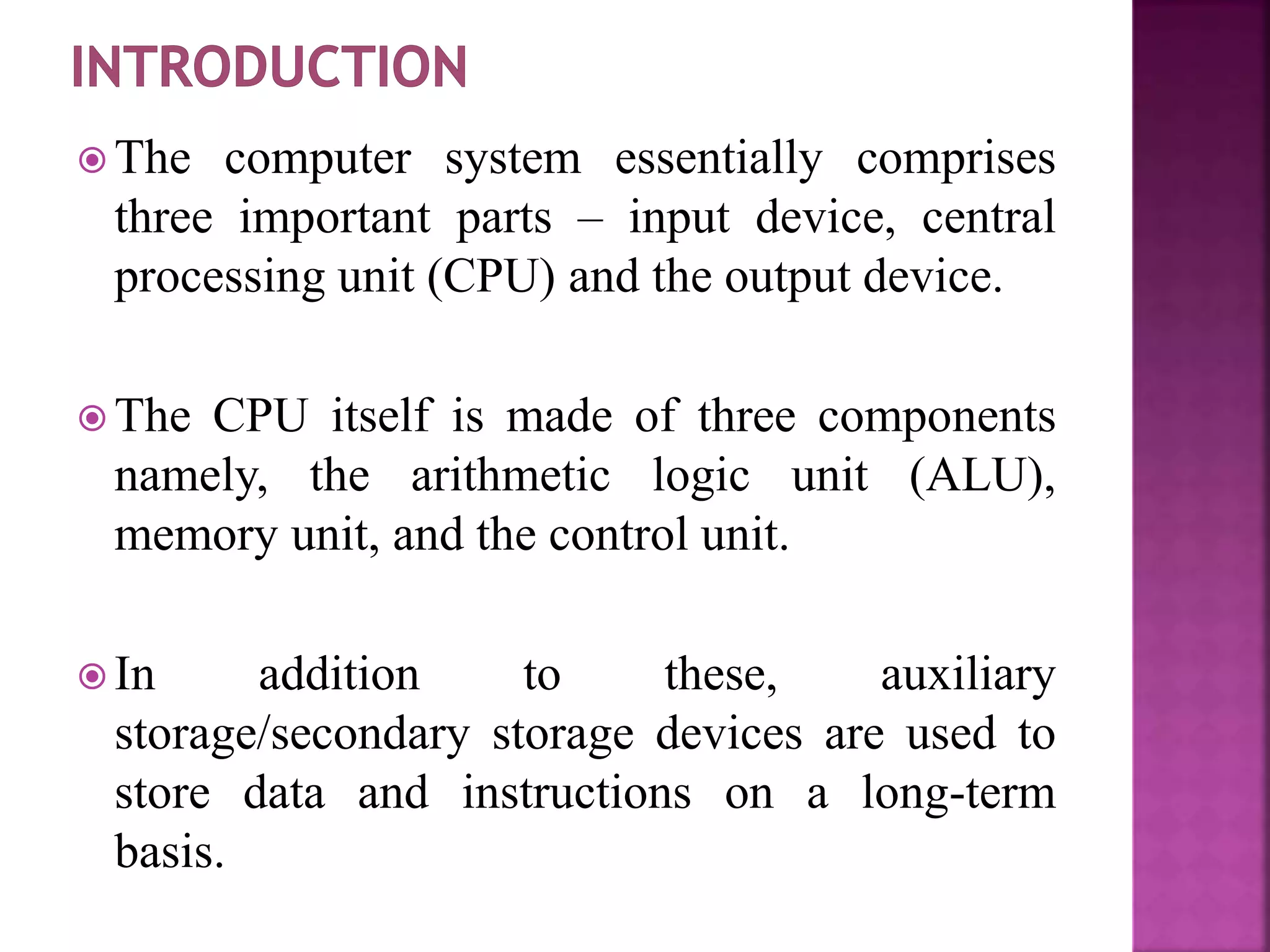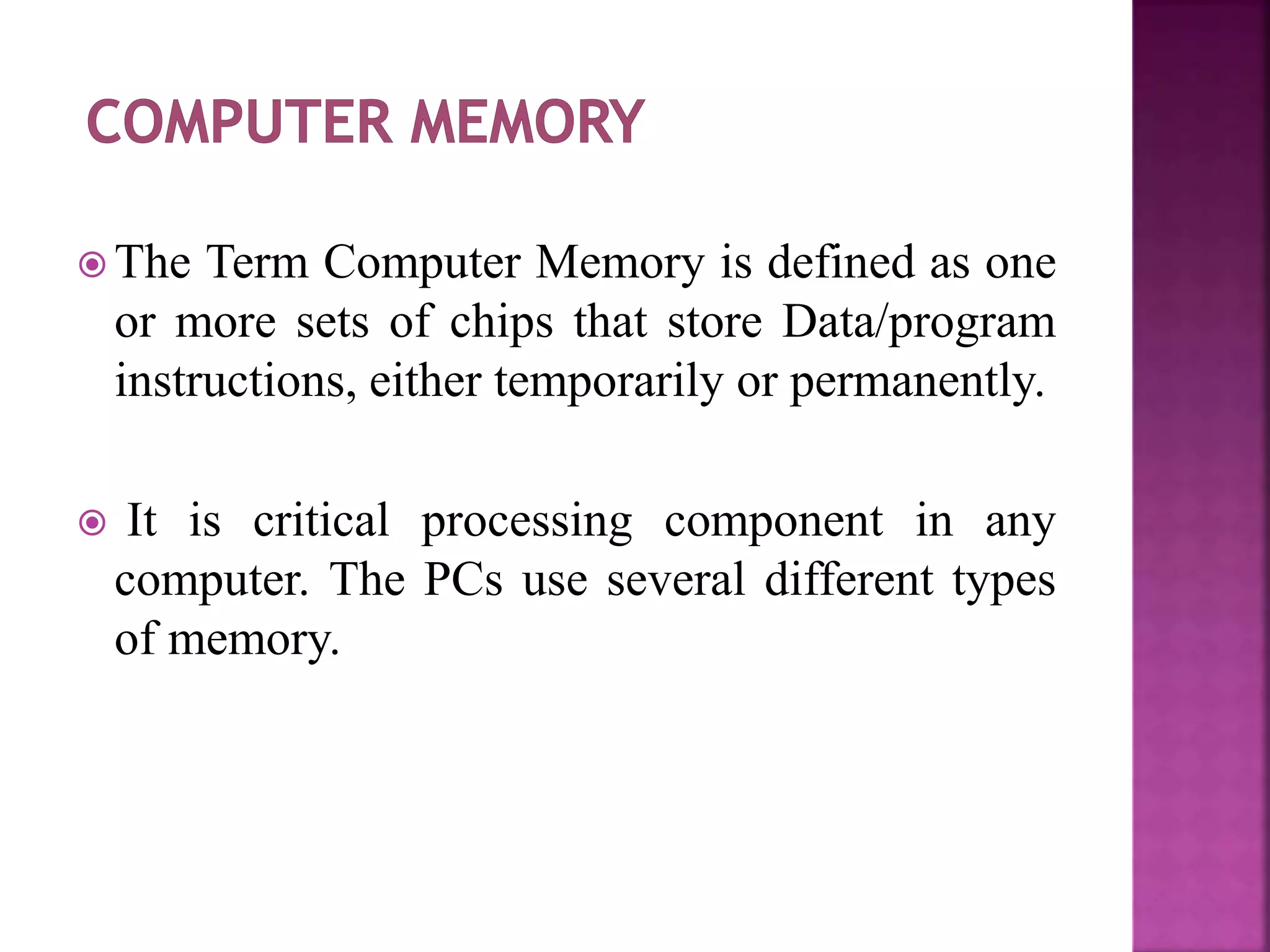The document summarizes the different types of computer memory. It describes primary memory (RAM and ROM) and secondary storage. RAM is volatile and temporarily stores active data and programs, while ROM is non-volatile and stores permanent instructions. RAM types include SRAM and DRAM, while ROM types are PROM, EPROM, and EEPROM. Secondary storage is non-volatile and stores long-term data at a lower cost than primary memory.













